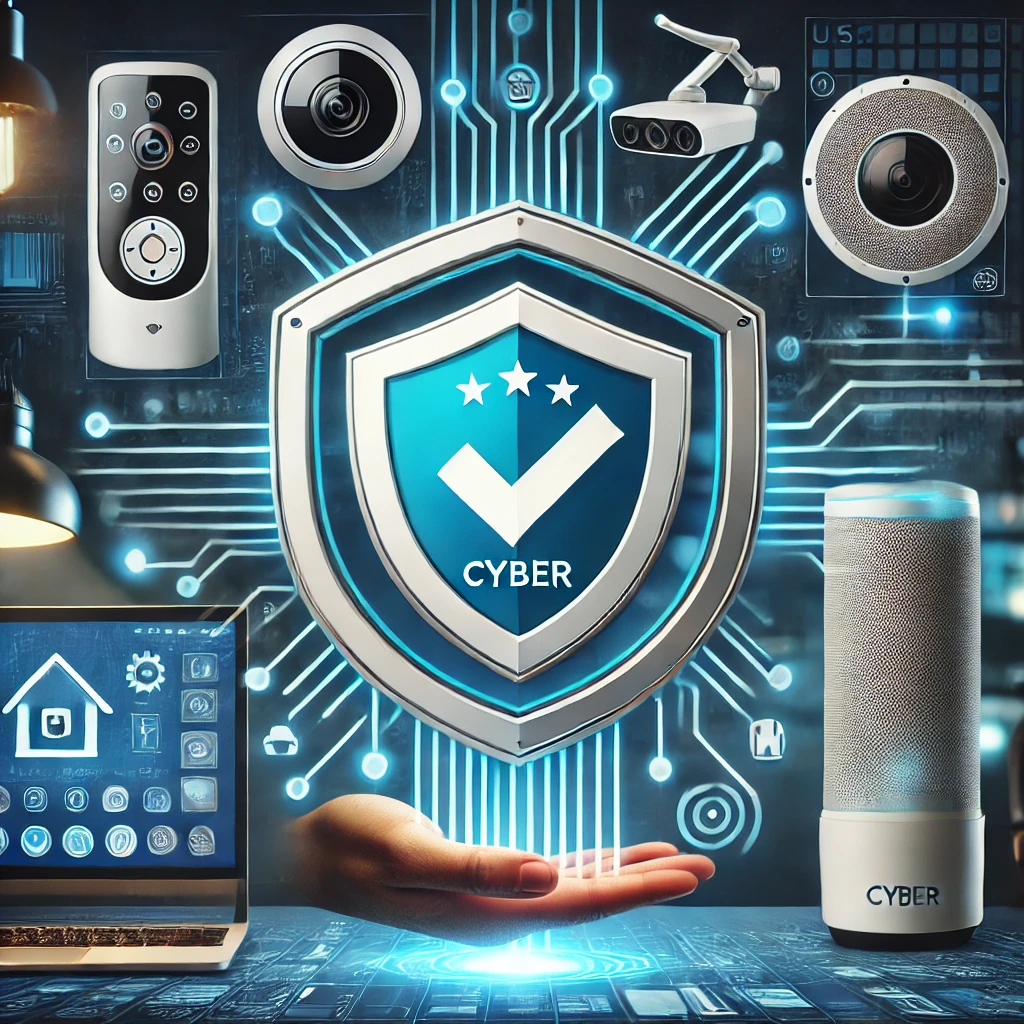
Understanding the U.S. Cyber Trust Mark: What You Need to Know
The U.S. Cyber Trust Mark is a newly introduced label designed to help consumers identify secure smart devices. With the growing number of Internet of Things (IoT) devices like smart thermostats, cameras, and speakers, cybersecurity threats are more prevalent than ever. This mark serves as a quick and easy way to recognize products that meet stringent security standards.
In 2022, over 112 million IoT cyberattacks were recorded globally, and the rise of AI-powered threats has led to an expected 82% increase in 2024. To combat these risks, the U.S. government established the Cyber Trust Mark to ensure safer smart devices for consumers.
What is the U.S. Cyber Trust Mark?
The Cyber Trust Mark is a government-backed certification that verifies a smart device’s cybersecurity features. It acts as a clear indicator that a device has been tested and deemed secure against common cyber threats.
Many IoT devices, including smart TVs, video recorders, and smart plugs, have previously been targeted by hackers. With this mark, consumers can confidently select products that prioritize security.
How Devices Earn the Cyber Trust Mark
For a product to receive the U.S. Cyber Trust Mark, it must pass rigorous security tests that assess key areas, including:
Strong Password Protection: Devices must require robust passwords to prevent unauthorized access.
Data Privacy Measures: Effective data encryption and storage protocols are necessary to protect user information.
Regular Security Updates: Devices should offer timely software updates to patch vulnerabilities.
Manufacturers that meet these standards can display the mark on their products, giving consumers peace of mind when making a purchase.
Keeping Up with Evolving Standards
The Cyber Trust Mark isn’t static. As cybersecurity threats evolve, so will the certification standards. Manufacturers will need to continually ensure their products remain compliant by meeting the latest security requirements.
When Will the Cyber Trust Mark Appear?
The Cyber Trust Mark is already rolling out, and consumers can expect to see it on various devices soon. Products such as smart locks, security cameras, and voice assistants are likely candidates for certification. When shopping, look for the shield symbol to confirm a device’s security status.
Why the Cyber Trust Mark Matters
This initiative simplifies the decision-making process for buyers. Instead of deciphering complex security specifications, consumers can rely on the Cyber Trust Mark as a quick reference for safety. Additionally, it motivates manufacturers to uphold higher security standards, making the entire industry more secure.
What if a Device Lacks the Mark?
Not every device will carry the Cyber Trust Mark, but that doesn’t automatically mean it’s unsafe. Consumers can take extra precautions by researching the device’s security features, reading product reviews, and verifying updates and support from the manufacturer.
Tips for Protecting Your Existing Devices
If you already own smart devices without the Cyber Trust Mark, there are still steps you can take to enhance their security:
Change Default Passwords: Use strong, unique passwords for each device.
Keep Software Updated: Regularly install updates to fix vulnerabilities.
Disable Unnecessary Features: Turn off functions you don’t use.
Secure Your Network: Ensure your Wi-Fi network has a strong password and encryption enabled.
The Future of Device Security
The Cyber Trust Mark is a significant step toward a safer digital world, but it’s only the beginning. In the coming years, we can expect expanded certification criteria, broader device coverage, and more robust testing.
While the mark is currently exclusive to the U.S., other countries may adopt similar programs to safeguard consumers globally.
Conclusion
The U.S. Cyber Trust Mark makes it easier for consumers to make informed choices about the smart devices they bring into their homes. Keep an eye out for this symbol during your next purchase—it’s your sign of a safer, more secure product.